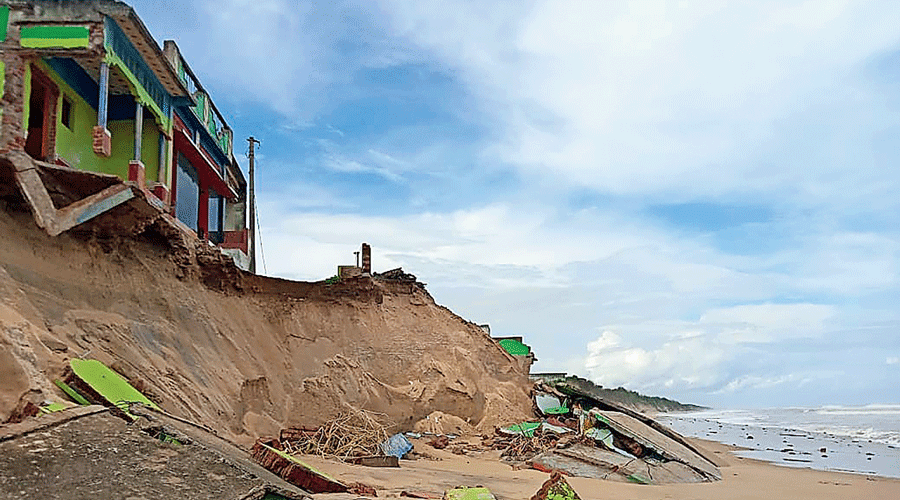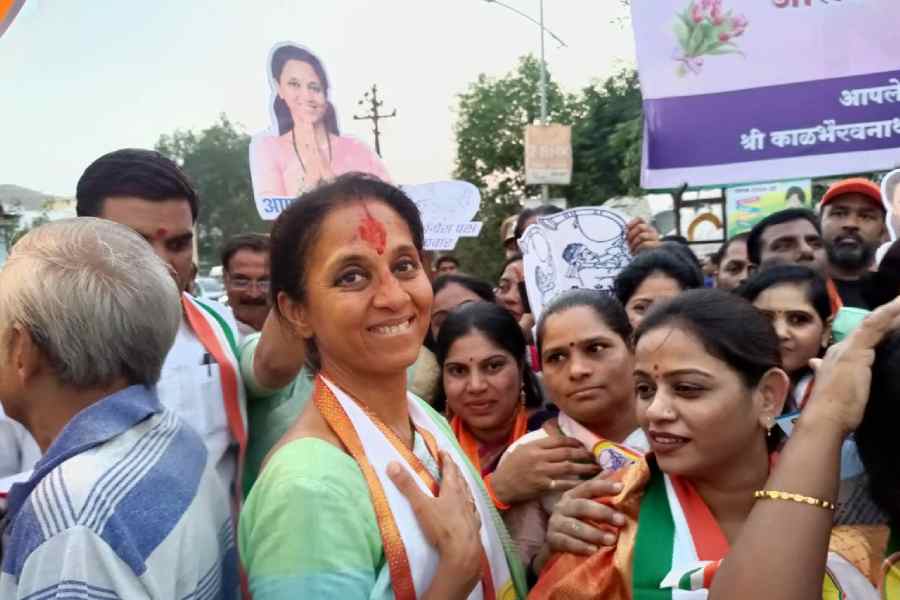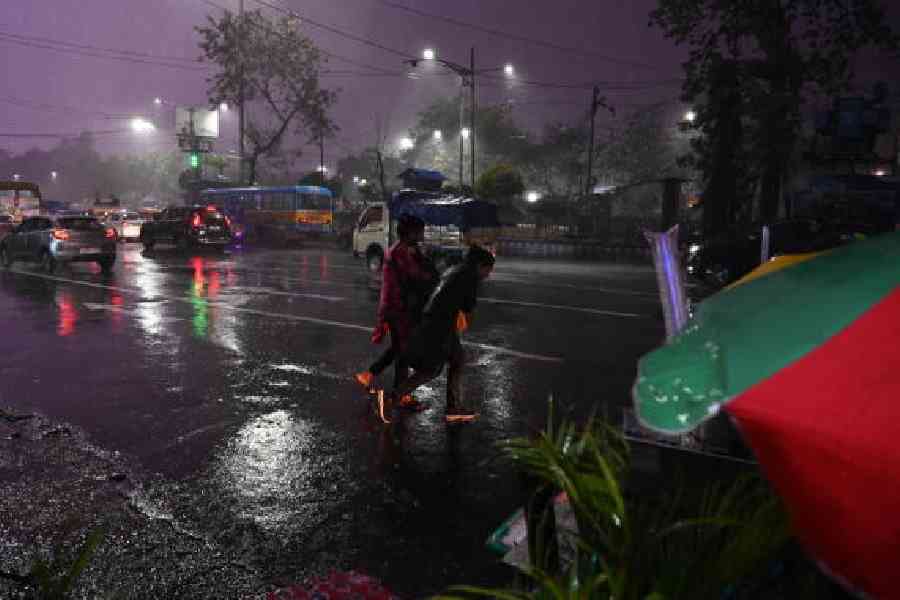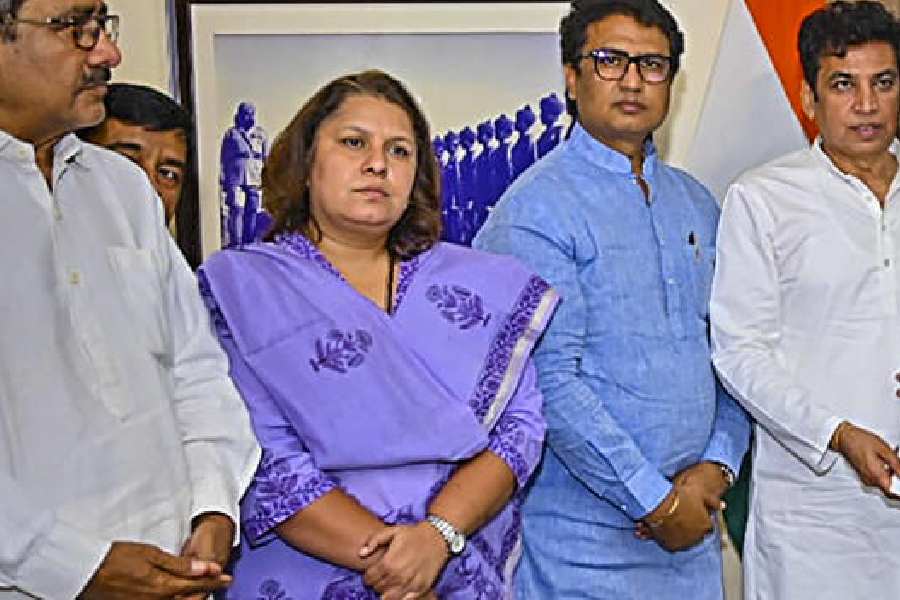The sea eating into the landmass in several coastal districts of Odisha has triggered concern.
The marching sea is gobbling up houses one by one at the Podampeta village in Ganjam district in southern Odisha near the state’s border with Andhra Pradesh, about 220km from here.
In the last 48 hours, six houses were washed away by high tides.
On Monday, Ganjam tehsildar Arun Kumar Nayak visited the site and said those living near the coast would be shifted to a safer place. “We have already shifted people. There has been no loss of life. A few abandoned houses have been swept away,” Nayak told The Telegraph.
He said: “These areas are near the nesting place of the endangered olive ridley turtles and, therefore, are now a prohibited zone. We need to take permission to go for any structural changes.”
Apart from human habitations, the advancing sea has been threatening agriculture in parts of the Ganjam district with water overtopping saline embankments and flooding farmland.
“Earlier, there were 400 houses in this village. Almost everybody have left their homes and settled in other places,” Ch. Babaji, fisherman, told The Telegraph.

The damaged houses. Gopal Krishna Reddy
“The sea erosion has begun with the onset of the monsoon. It has slowly started eating away the landmass from the middle of July. There are many houses near the beach that have already been eaten up by the sea,” he said.
The fisherman said: “Earlier, Rameyapatna village in Chikiti block in Ganjam district was hit by the high tide. Now the Podampeta under Ganjam block village has been hit. The sea has made an ingress of nearly 700 metres during the last 15 years and entered the landmass,” he said
Citing the reason behind erosion, Babaji said: “Besides the global warming, the change of course by the Rushiklya river, the lifeline of southern Odisha, has contributed to it.”
Ch. Pandi, a fisherwoman, told said: “It’s tough to leave the place where you were born. I used to visit my house every day.”
Another fisherman said: “The authorities should use sandbags and stone boulders on the embankment supporting the village road to prevent more damage.”
Prashant Kumar Panigrahi, oceanographer at the Integrated Coastal Zone Management Project (ICZMP), said: “The first phase of the ICZMP project has been already completed in Odisha, Bengal, and Gujarat. The second phase of the project has been delayed due to the pandemic.
“Though the reports have been submitted, it’s yet to get approval from the Centre. In the second phase, all the villages near the coastline in the Ganjam district will be included.”
He said: “In the first phase under the ICZMP, the impact of the sea erosion in Kendrapara district has been minimised to a great extent using the geo tube technology. Similar technology will be introduced in Ganjam.”
The project has its thrust on drawing up plans for the conservation of biodiversity and checking soil erosion in coastal areas.
Steps would also be taken to protect the livelihood of coastal communities.










